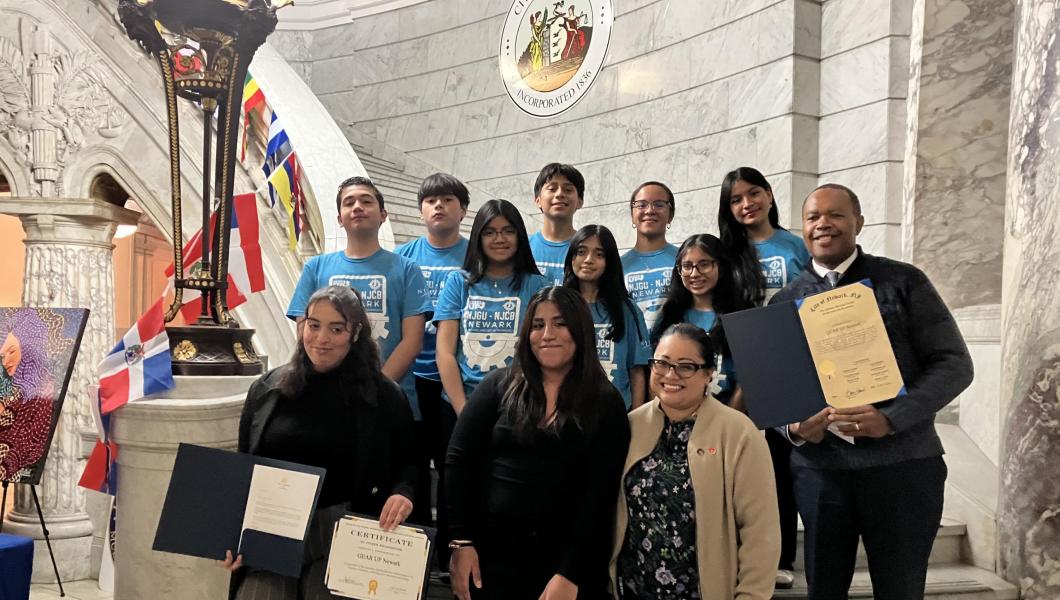Science Olympiad Steps Up STEM for Hundreds of Pre-College Students

Check out these numbers: Nearly 700 middle and high school students on 44 student teams from throughout New Jersey competed in 25 hands-on events at the 13th Annual Science Olympiad at NJIT. The event, held Jan. 8 and hosted once again by the university’s Center for Pre-College Programs (CPCP), challenged participants in a range of activities related to science, technology, engineering and math (STEM).
NJIT professors and students, along with representatives from UPS, Stryker and Merck, served as event supervisors and volunteers for the competition, which culminated in an awards ceremony in the Campus Center Ballroom. The anticipation ran high as Suzanne Berliner Heyman, director of CPCP’s program operations and outreach, announced the winners for each event in both the middle and high school divisions, followed by the six overall top-scoring middle and high schools, which will go on to compete in the statewide Science Olympiad.
These schools, from first to sixth place, included Thomas Edison EnergySmart Charter School and Millburn High School, Buzz Aldrin Middle School and Bergen County Academies, Tenakill Middle School and Hillsborough High School, Central Jersey College Prep Charter School and Union County Vocational-Technical High School, Glenfield Middle School and Livingston High School, and Heritage Middle School and Al-Ghazaly High School.
Here’s a look at some of the STEM activities that tested minds, promoted teamwork and fostered fun, all at the same time — and all over campus.
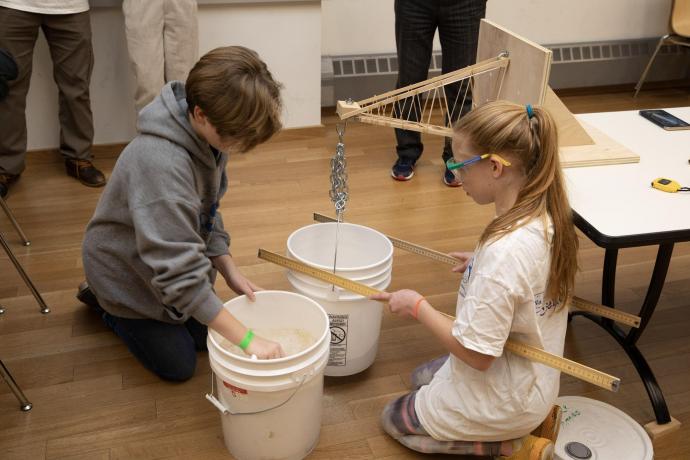
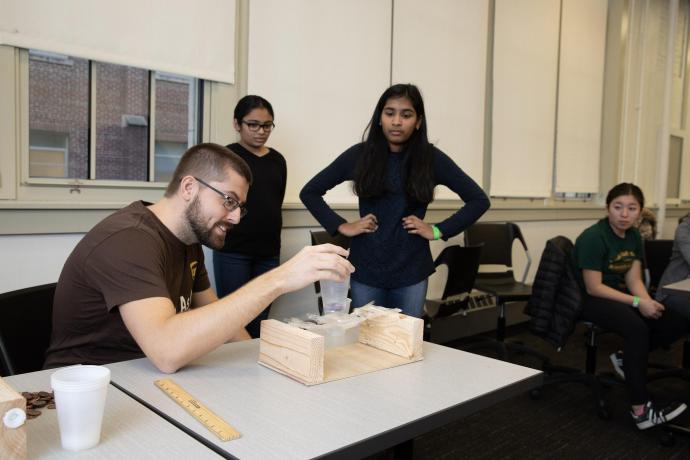
(Above) Elsewhere in CKB, middle and high school students engaged in “Mystery Architecture,” which provided a bag of materials with instructions for designing and building a testable device — in this case, a bridge assembled from straws and Scotch tape. The UPS-sponsored event gave participants 30 minutes to construct their bridges, putting their physics knowledge to work. Each bridge was then placed atop a wood structure with a small plastic cup resting in the middle. Activity administrators dropped pennies in the cup one at a time until the bridge collapsed, counting the number of pennies and measuring the distance from where the bridge fell to the wood structure. This team from Robert R. Lazar Middle School fared well — 25 pennies and 6-1/4 inches.
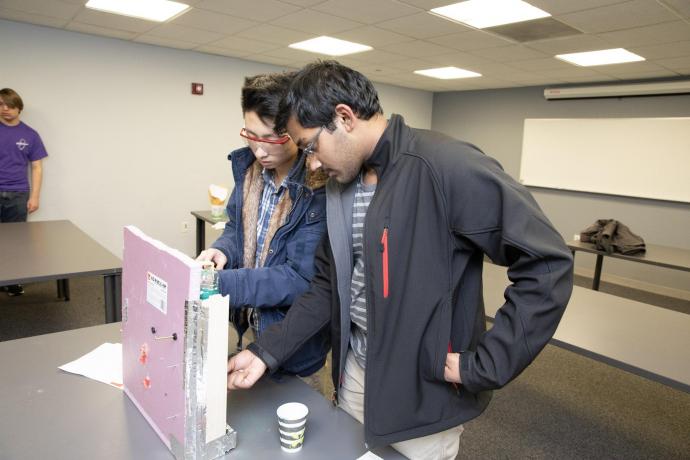
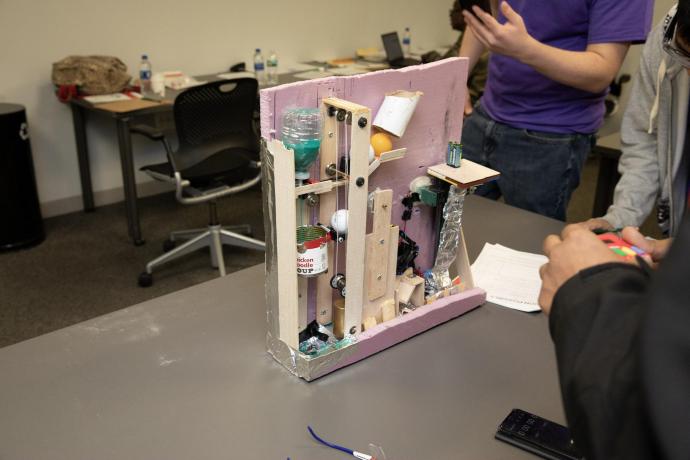
(Above) In Campus Center Room 230, Olympiad participants fine-tuned the Rube Goldberg-like devices they built before competition day for “Mission Possible.” The idea was to design a machine that performs a simple task in an intentionally complicated manner, here to indirectly raise a battery from the bottom to the top of the device within 3 minutes. In addition to their time to complete the task, students were evaluated on the use of levers and pulleys and other movement mechanisms in their device. The machine created by these Montvale High School students did the job in 42 seconds.
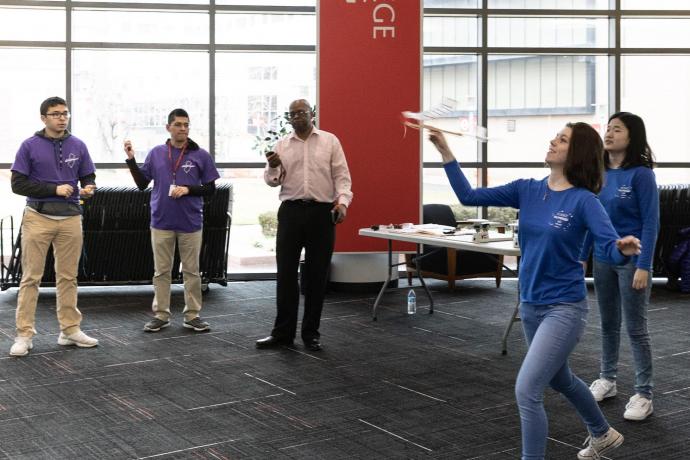
(Above) Flight was the goal of “Wright Stuff,” which took place in the Campus Center Atrium. There, students sought to achieve maximum time aloft for rubber band-powered, propeller monoplanes they designed and constructed with such materials as balsa wood and paper mache. All monoplanes were required to weigh 8 grams or less, and have a wing space of 35 centimeters or less and a wing width of 8 centimeters or less. Competitors were permitted as many test flights as they needed, but only two scorable flights — all within 8 minutes. Three event supervisors clocked each flight and then averaged the times. The monoplane flown by these students from Immaculate Heart Academy stayed in the air for approximately 4.5 seconds.
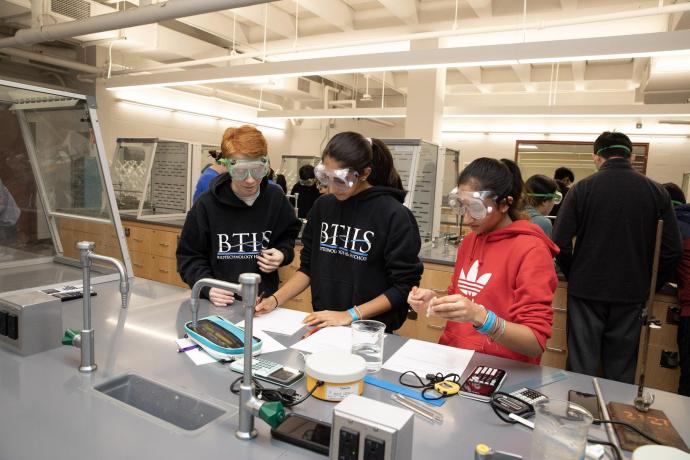
(Above) “Experimental Design,” located in Tiernan Hall Room 204, provided teams with a beaker, clamps, calipers, a magnetic plate and other tools to design, conduct, analyze and write up an experiment in 50 minutes. Event supervisors scored their work based on how many criteria were met. These Biotechnology High School students were “looking at the effect of agitation of water on the dissolution rate of a spherical lollipop.”
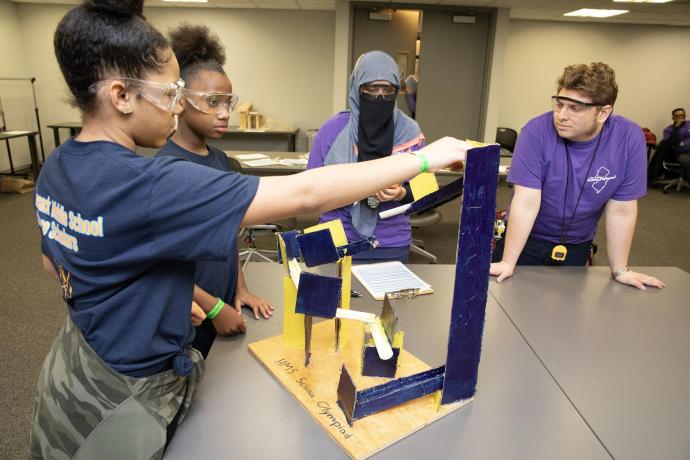
(Above) Back at the Campus Center, in Room 240, participants tweaked roller coasters they built from a variety of materials. Their aim was to guide a spherical object to the bottom of their coaster by using the force of the object’s gravitational potential energy. Each team had 8 minutes to practice and conduct two scorable runs, with points also awarded based on coaster height, number of gaps and other construction elements. These middle schoolers from Hackensack tinkered with their cardboard coaster to achieve the best possible outcomes.
